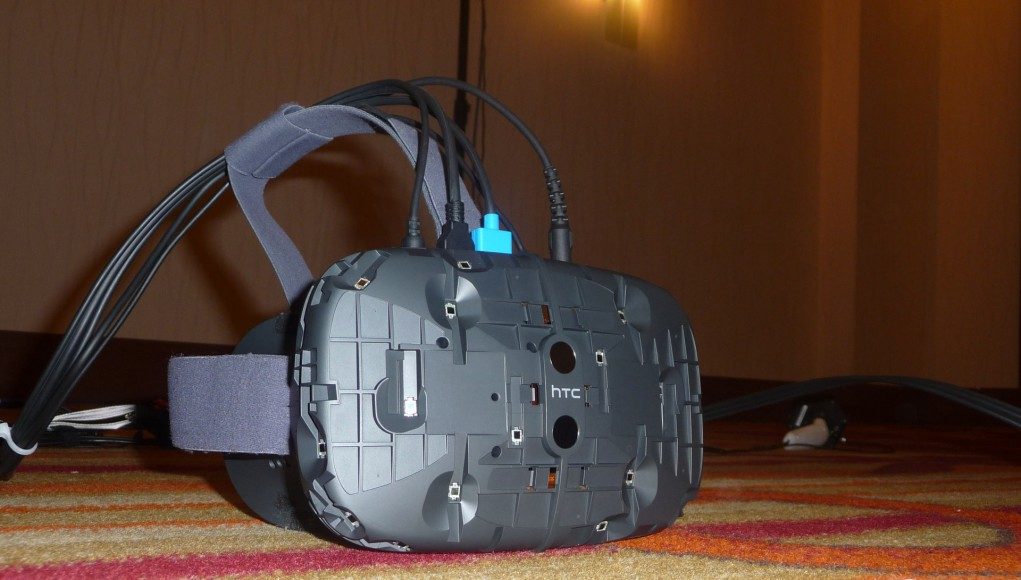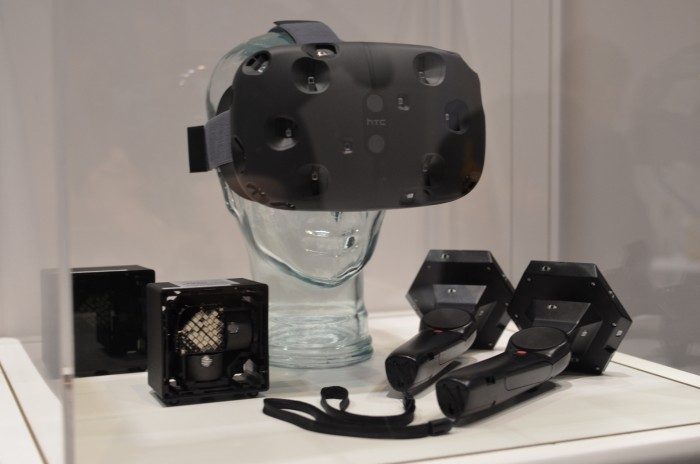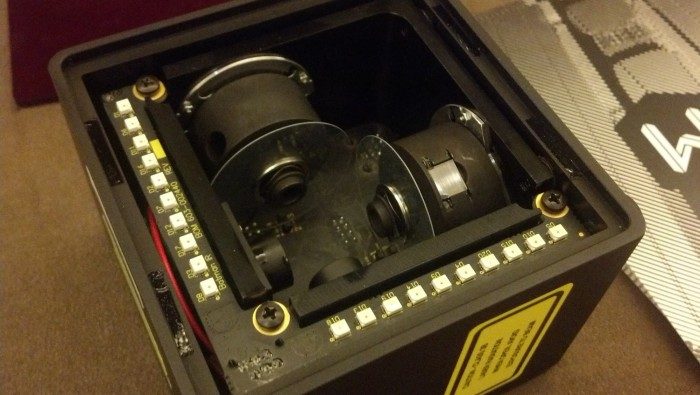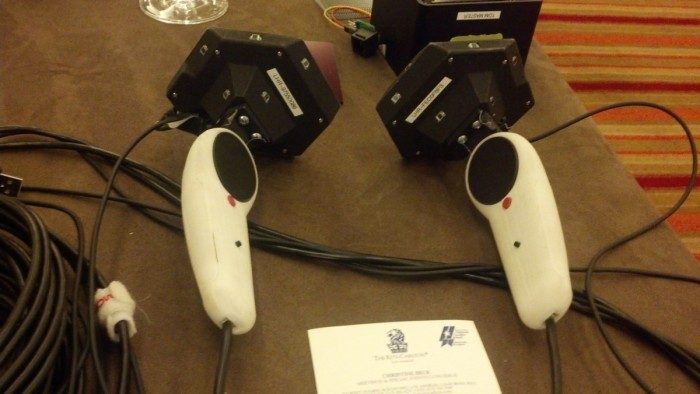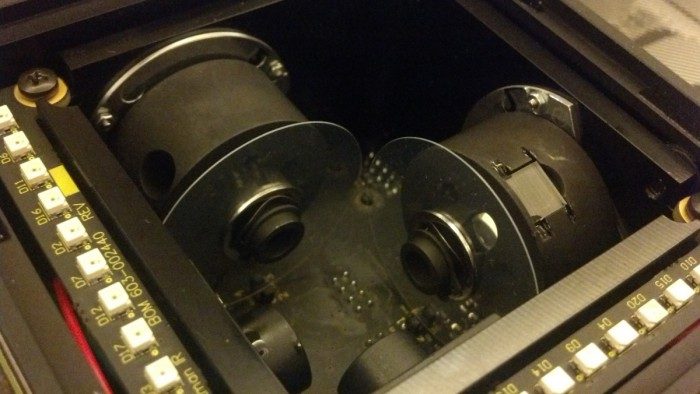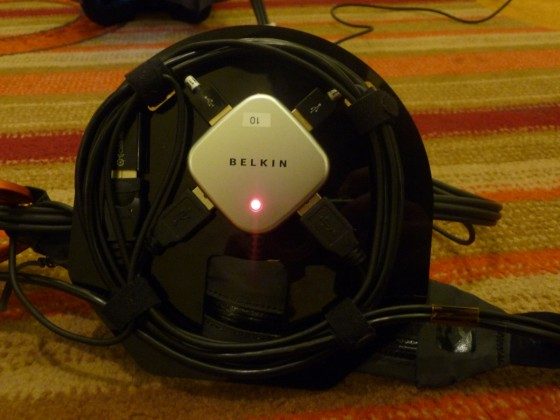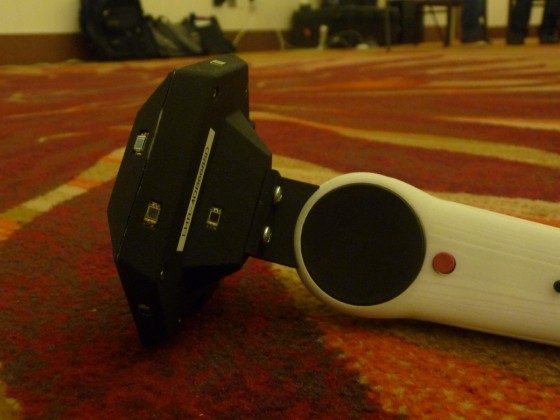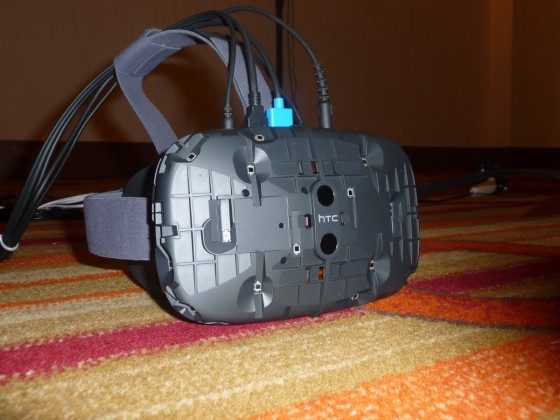VR production team WEVR made a splash at the recent VRLA Spring Expo last week when they turned up with SteamVR and the HTC Vive headset to demonstrate the VR platform to attendees. It was an opportunity for writer Matthew Terndrup to get up close and personal with the new VR tech that had caused such a storm at last month’s Game Developers Conference (GDC). He came away with some of the most candid images yet seen of Valve’s Lighthouse technology and got to watch the reactions of numerous first-time users.
Taiwanese smartphone manufacturer HTC and gaming giant Valve announced a flagship virtual reality system called the ‘Vive’ last month at Mobile World Congress, the first hardware announced for the SteamVR platform. The surprise reveal set the VR community buzzing. In a matter of days, copious speculation surrounding the device surfaced online as VR enthusiasts wondered how the system worked, especially the tracking technology, dubbed ‘Lighthouse’.
Several hands-on previews showed up, mostly focusing on experiences that were demoed at MWC. However, little hard technical information made its way out, despite the thirst of the VR community.
See Also: HTC Vive and SteamVR Hands-on – A Stage of Constant Presence
Additional details arose a few days later in San Francisco at GDC 2015 when Valve allowed select developers and members of the press try Vive and SteamVR. Over the course of that week we learned much more about the mysterious system. Chief among the revelations was info surrounding ‘Lighthouse’, Valve’s proprietary ‘room scale’ IR Laser based tracking system. All of the demos were under tightly-controlled conditions however, leaving little time for investigations of the equipment.
That was at least until California-based VR production team WEVR brought their own Vive headset and Lighthouse development kit to the VRLA expo a couple of weeks later. Under much less restrictive conditions, I managed to get up close and personal with the hardware, and was blown away by reactions I saw to the platform.
After walking into WEVR’s SteamVR demo room, the first thing that I noticed was a table directly in front of the entrance. It had controllers, mounds of wires coiled up, and an opened Lighthouse base station.
The controllers (above) were different than those seen at GDC; they were white, with cables coming out of both the Lighthouse crown on top and from the bottom of the controller. These developer prototypes were older versions, but the Lighthouse tracking tech is identical in concept to what will ship with the platform at retail. As seen in the photo above, there are sensors embedded into the crown on the top of the controllers, the same type seen on the HTC Vive headset. According to a Tweet by Chief Pharologist Alan Yates of Valve, those sensors are photodiodes. Below the sensors are circular track pads that can be pushed down like gamepad buttons, with haptic tech shared by Valve’s Steam Controller:
Haptic force actuators on both sides of the controller deliver precise, high fidelity vibrations measured in microseconds. Feel the spin of a virtual trackball, the click of a scroll wheel, or the shot of a rifle. Every input, from the triggers to the trackpads, can offer haptic feedback to your fingertips, delivering vital, high-bandwidth, tactile feedback about speed, boundaries, thresholds, textures, or actions.
See Also: Valve Reveals Timeline of Vive Prototypes, We Chart it For You
Next to the controllers was a single, semi-naked prototype base station. There are square-mounted LEDs on two of the inside edges. A pair of circular chambers lay inside, where lasers shoot out while the cylinders rotate at a high speed. The lasers are initiated by what is called a laser diode, according to Yates in a conversation on Twitter. As the cylinders spin, they sweep an invisible laser across the room which is detected by the sensors found on Lighthouse compatible devices, be that headsets or peripherals like the controllers.
Speaking with Engadget’s Ben Gilbert, Valve president Gabe Newell said that Lighthouse “…allows you to track an arbitrary number of points, room-scale, at sub-millimeter accuracy 100 times a second,” making this system not only incredibly precise, but impressively scalable. Further, the computational power required to calculate these positions is relatively cheap, possibly giving the system an edge over computer-vision approaches to tracking.
In the demo room, WEVR team members controlled the virtual reality experiences from a desk off to the side. A space of about 15ft x 15ft was designated for the demos. In opposite sides of the area stood two base stations atop 10ft tall tripods, angled down at the play space. Each base station had a couple of wires running down, one of which appeared to be a LAN cable. Looking closer, I discovered that one cable was connected to a nearby power outlet, and the other led to the other base station; most likely for syncing purposes.
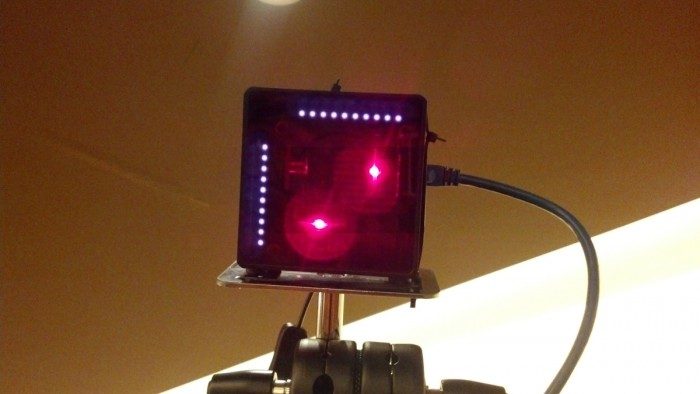
On the floor, sat the Vive VR headset, the controllers, and a belt that linked it all together to the hefty desktop computer nearby. A handful of cables stuck out of the top of the headset and led to the belt, giving users the appearance of having a ponytail made of wires. The cables connecting to the belt stretched about 15ft. A Belkin USB hub accepted four inputs on the belt, and the controllers laid there ready to be picked up.
After donning the headset, belt, and controllers, the first scene users see is a white virtual space with a series of floating demos screens all around them. The operator sitting at the control desk talked to the participants through a microphone that was pumped through the user’s headphones. The operator began by telling the player that they could inflate virtual balloons by clicking down on the controller’s track pads. Giddiness set in as people got comfortable with the new tracking system and controllers. Many exclamations like “wow” and “I can’t believe that worked!” were repeated throughout the day as each person tried out the Vive. Such reactions—and this was just an acclimation space before the real experiences had begun!

From the ‘waiting room,’ players were then moved on to WEVR’s own ThebluVR: Encounter experience which put players underwater on a sunken ship. Players walked around and interacted with tiny fish on the deck of the ship. Then, an enormous blue whale swam up and looked directly at the user, hanging there briefly as if it was investigating the odd human creature, before venturing off into the darkness of the sea.

